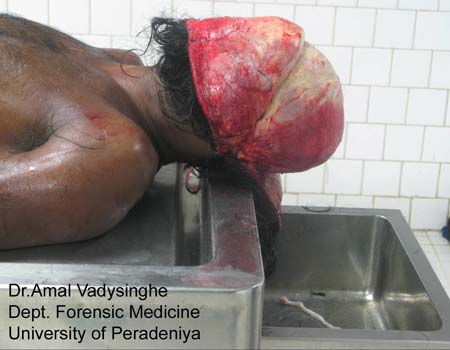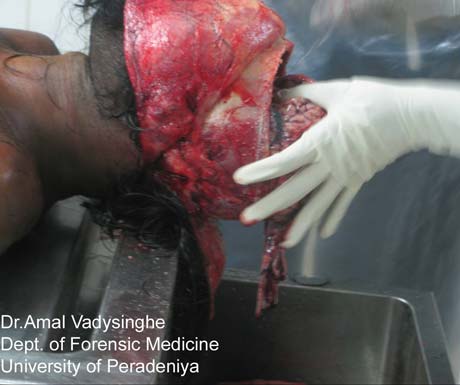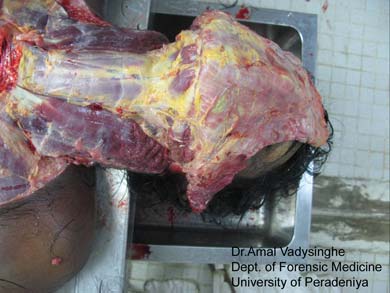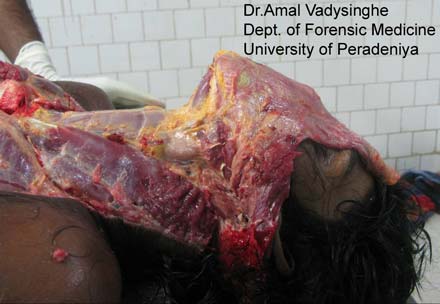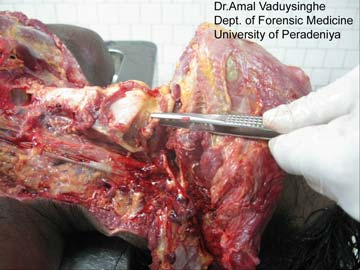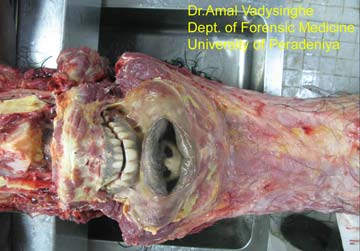|
Objective - To identify neck and facial injuries by creating a bloodless field and step by step dissection Technique 1. Dissect the head and remove the brain.
Tilt and extend the neck and keep for
15-20 minutes.
(To obtain a bloodless field)
|
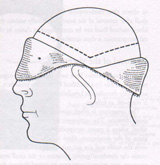
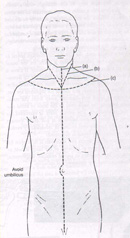
|
|
|
|
|
2. It is good, if the neck dissection is started
after removing the thoracic contents - helps creating a blood less
field.
•
|
|
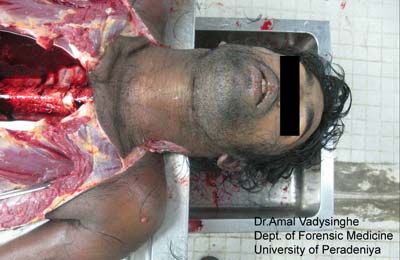 |
|
|
N.B. –
If
(1) and (2) are not done spurious bleeding will be seen over the
posterior surface of esophagus and anterior ligament of the cervical
spine.- (Post mortem artifact identified by Prinsloo Gordon)
•To avoid this Shapiro
recommended this method.
|
|
|
3. Y / U shape skin incision made on the frontal aspect
of neck.
Mastoid process -->
postero-lateral aspect of the neck -->outer and middle 1/3 of clavicle
--> sternal angle.
4. Incision must be immediately deep to the skin and reflection of the skin up to the lower border of the mandible should be done. (This can be further extended for the dissection of face ) |
|
|
|
|
|
5. Sternocleidomastoid muscle is freed
from its lower attachments and reflected from the underlying
structures.
|
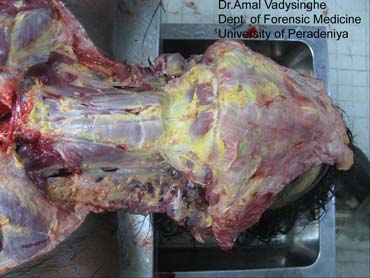
|
|
6.
Carotid sheath, carotid
artery, internal jugular vein, vagus nerve, omohyoid/ sterno thyroid /
sterno hyoid / thyro hyoid muscles & thyroid gland are exposed and
cleared by blunt dissection.
|
|
|
|
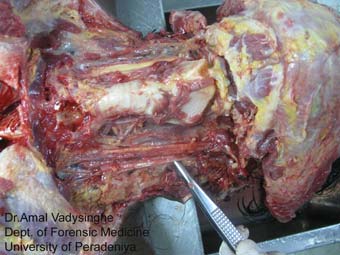
|
|
7.
Incising the strap-muscles first at lower and then at upper
attachments should be done and throat skeleton should be identified
8. The carotid artery should be opened longitudinally
|
|
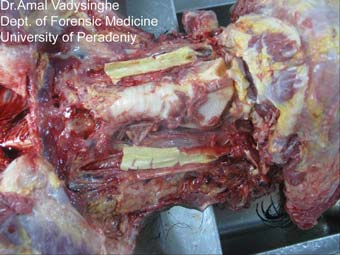 |
|
|
9.
The cervical spine should be exposed after mobilizing the
larynx, pharynx, trachea and oesophagus.
|
|
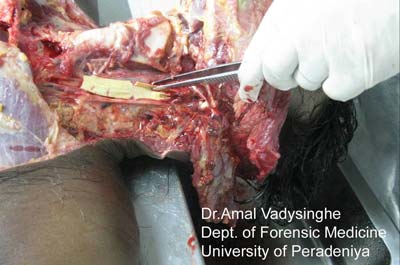 |
|
|
10.The cervical spine should be examined
for
fractures and
dislocations.
|
|
|
|
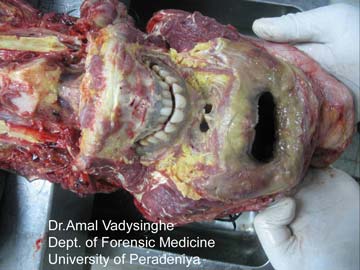
|
|
11.Back of the neck to be dissected layer
by layer when required
12.Radiology & Histology may be needed
for identification & evaluation of injuries
|
|
